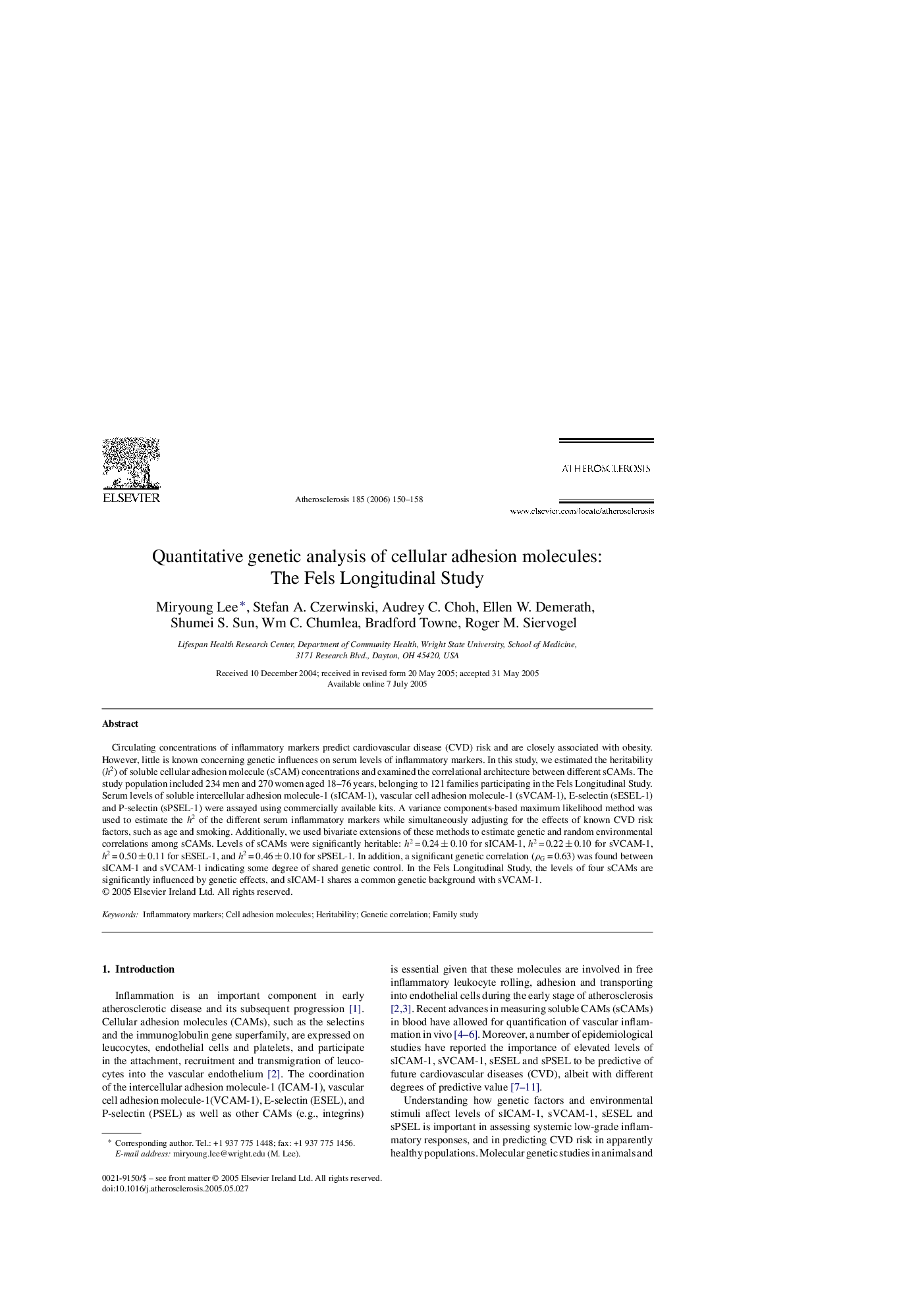| Article ID | Journal | Published Year | Pages | File Type |
|---|---|---|---|---|
| 2895412 | Atherosclerosis | 2006 | 9 Pages |
Circulating concentrations of inflammatory markers predict cardiovascular disease (CVD) risk and are closely associated with obesity. However, little is known concerning genetic influences on serum levels of inflammatory markers. In this study, we estimated the heritability (h2) of soluble cellular adhesion molecule (sCAM) concentrations and examined the correlational architecture between different sCAMs. The study population included 234 men and 270 women aged 18–76 years, belonging to 121 families participating in the Fels Longitudinal Study. Serum levels of soluble intercellular adhesion molecule-1 (sICAM-1), vascular cell adhesion molecule-1 (sVCAM-1), E-selectin (sESEL-1) and P-selectin (sPSEL-1) were assayed using commercially available kits. A variance components-based maximum likelihood method was used to estimate the h2 of the different serum inflammatory markers while simultaneously adjusting for the effects of known CVD risk factors, such as age and smoking. Additionally, we used bivariate extensions of these methods to estimate genetic and random environmental correlations among sCAMs. Levels of sCAMs were significantly heritable: h2 = 0.24 ± 0.10 for sICAM-1, h2 = 0.22 ± 0.10 for sVCAM-1, h2 = 0.50 ± 0.11 for sESEL-1, and h2 = 0.46 ± 0.10 for sPSEL-1. In addition, a significant genetic correlation (ρG = 0.63) was found between sICAM-1 and sVCAM-1 indicating some degree of shared genetic control. In the Fels Longitudinal Study, the levels of four sCAMs are significantly influenced by genetic effects, and sICAM-1 shares a common genetic background with sVCAM-1.
